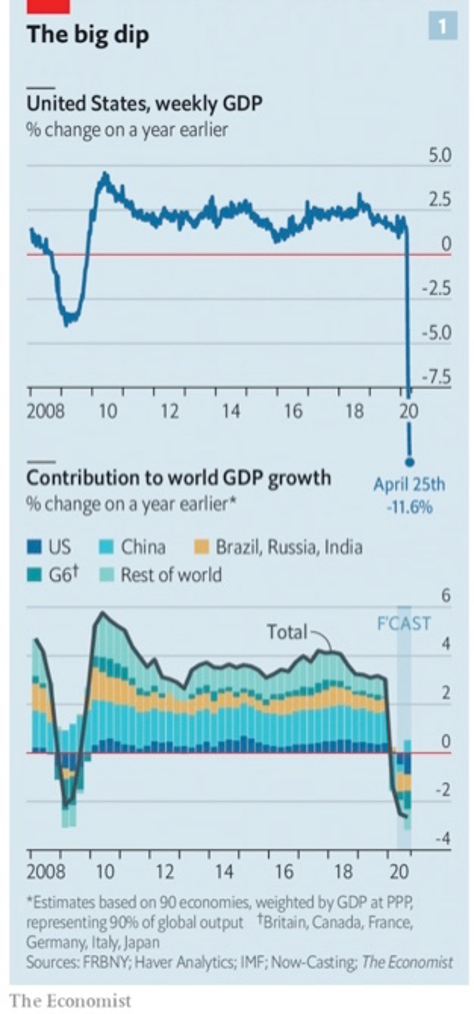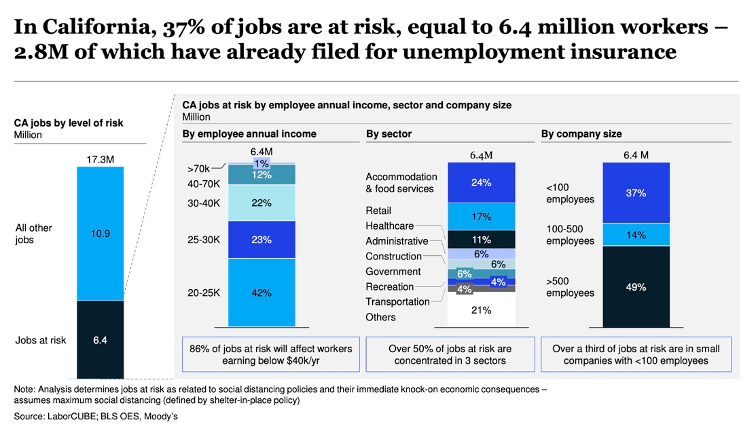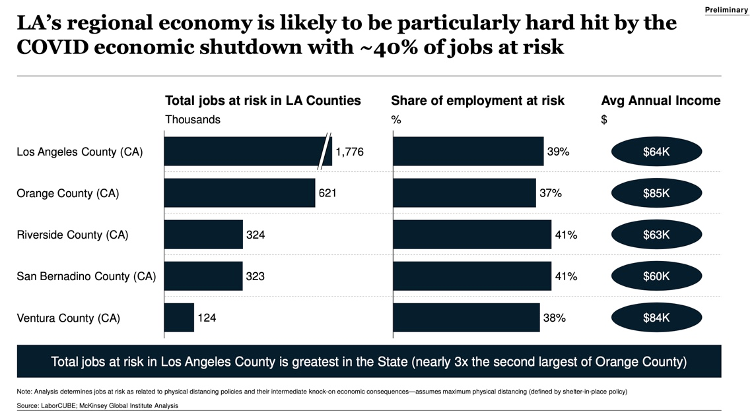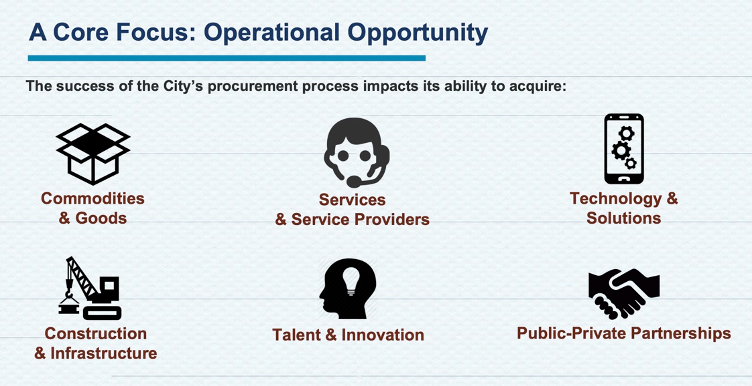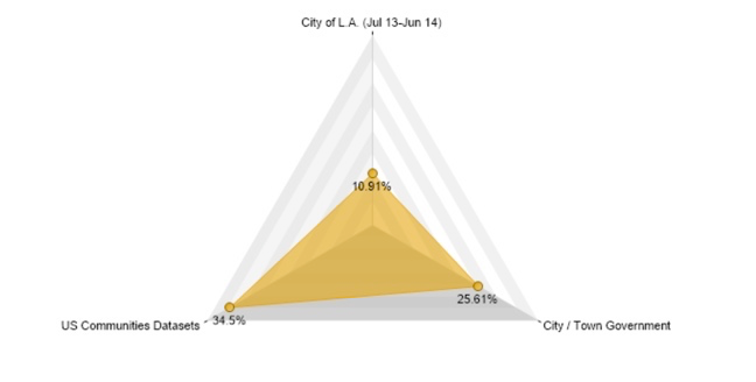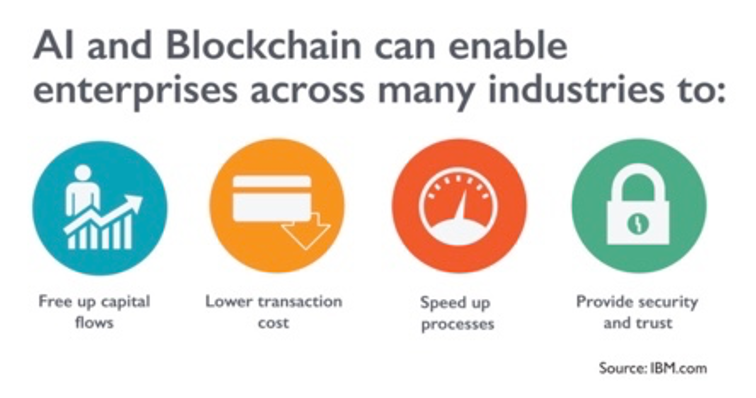With 40 percent of jobs in LA County potentially 'at risk' as a result of the COVID-19 mandated shutdown, the region is likely to be particularly hard hit economically. TPR shares with permission the data-driven insights from the Los Angeles Coalition for the Economy & Jobs (LA Coalition) Executive Director, Michael Kelly on the unprecedented disruption that enforced social distancing has wrought on the local and global economy. The analysis argues that it is essential that policymakers understand the interactions of three major components—economic specialization, human capital formation, and institutional factors— to determine how well a regional economy will cope; and that cross silos collaboration be the rule to address the complex challenges of the post-COVID “new economy”

Michael Kelly
"L.A. for far too long has allowed its anchor institutions, both public and private, to operate in silos, with fragmented networking and connectivity. Once again...We need to invest in where the world is going, not where it is.”—Michael Kelly
The Big Picture
L.A. has an enormous opportunity to confront its weaknesses and harness its strengths during this crisis. There are more than enough reports, books and speeches to look over to better understand the past in order to plan for the future.
The book I found myself going back to is The Rise and Fall of Urban Economies|Lessons from San Francisco and Los Angeles.
The authors argue that it is essential to understand the interactions of three major components -economic specialization, human capital formation, and institutional factors - to determine how well a regional economy will cope with new opportunities and challenges. They use the divergent economies of Los Angeles (low per capita income levels) and San Francisco (high per capita income levels) to make a point.
Though some of L.A.'s leaders would not agree with their findings, we should agree on their main point - L.A. was once one of the most successful economies in the world supporting a thriving business community, a growing middle-class and working-class; and today it is a tale of two cities - rich and poor.
Storper's Op-Ed in the L.A. Times (2015) highlighted all of their findings and pointed out one of our greatest flaws - We have not focused enough on developing new-economy industries and technologies. I would agree, but put it in another way - we are great at verbalizing our aspirations for them, but we continue to struggle in figuring out ways to support them.
Case in point - L.A. County all by itself in 1990 had 850,000 jobs in manufacturing. Today, L.A. County has 325,000 manufacturing jobs. Though some of this loss was inevitable due to globalization, cheaper land and labor costs outside L.A. County, and technology, public policy makers accelerated some of the flight with tax, labor and regulatory changes that hindered capital investments.
We are fortunate that there are still more than 11,778 small and medium-sized manufacturers in the County (more than all but 8 states in the nation) and ~70 percent of these businesses have less than 20 employees. And we are leading the world's advancement into New Space and the Blue and Green Economies; all industries that require manufacturing.
The good news for L.A. is that these local manufacturers have stepped up to develop and provide the necessary personal protective equipment and other resources to our workers and communities in our time of greatest need.
Let's make sure we have a plan to keep and grow this segment of our economy moving forward with better economic and workforce development initiatives and that we execute impactful initiatives for all of those in our business community who drive commerce and the creation of good paying jobs.
1. World & U.S. Economy
Data: Womply, a firm which processes transactions on behalf of 450,000 small businesses across America, shows that businesses in all sectors have lost substantial revenue.
- Restaurants, bars and recreational businesses have been badly hit: revenues have declined some two-thirds since March 15th.
- Travel and tourism may suffer the worst losses. In the eu, where tourism accounts for some 4 percent of GDP, the number of people traveling by plane fell from 5m to 50,000; on April 19th less than 5 percent of hotel rooms in Italy and Spain were occupied.
Aggregate: Now-Casting Economics shows that the world economy shrank by 1.3 percent year-on-year in the first quarter of 2020, driven by a 6.8 percent year-on-year decline in China’s GDP.
U.S.: The Federal Reserve Bank of New York suggests that the country’s GDP is currently running about 12 percent lower than it was a year ago (see chart). Data suggests that if Americans chose to avoid person-to-person proximity of the length of an arm or less, occupations worth approximately 10 percent of national output would become unviable. Thus the new “90 percent economy”.
What to Focus On: Some indication that the spending effects of a lockdown will persist even after it is over comes from Sweden. Research by Niels Johannesen of Copenhagen University and colleagues finds that aggregate-spending patterns in Sweden and Denmark over the past months look similarly reduced, even though Denmark has had a pretty strict lockdown while official Swedish provisions have been exceptionally relaxed. This suggests that personal choice, rather than government policy, is the biggest factor behind the drop. And personal choices may be harder to reverse.
Conclusion: The behavior of the economy will be far less predictable. No one really knows for how long firms facing zero revenues, or households who are working reduced hours or not at all, will be able to survive financially.
Full Article at the Economist.
2. California's Economy
Chart: To understand the severity of this crisis, as of this week, one in five CA workers - 3.7 million - have filed forunemployment during the past seven weeks. The virus' impact is outpacing one's ability to visually capture it.
Recurring theme in government's response:Government's outdated technology continues to inhibit constituent's access to the resources they need. Government employees are stepping up to fill the gaps, but manning phone lines in an era of unprecedented innovation, is not the economy of scale we need. What is happening is that ~19 percent of CA's eligible have not yet received their benefits. The state is very efficient at collecting these dollars from workers paychecks, yet remains lacking in its response. The public sector need to invest in where the world is going, not where it is!
Trend: We are going far beyond traditional unemployment measures of full-time jobs lost. So many more Californians are on unpaid leave, have completely exited the workforce, had hours cut or for those holding multiple jobs, they have lost one or more of their jobs.
Context: Countries with strong job protections and welfare states have had many fewer struggles than the U.S. when it comes to keeping workers employed, so that they can go immediately back to work when lockdowns are lifted.
What's Next: The New Deal was pessimistic, while the Great Society was optimistic.FDR's goal was to create a larger pie and to ensure that the pieces of whatever pie that existed were more equitably distributed. Lyndon Johnson was more about political and educational empowerment of the poor and disadvantaged so that they could better compete. The answer to today's crisis has to be something that encapsulates both concepts.
What to focus on: As the public and private sectors commit to helping our most vulnerable workers and residents and planning for the re-opening of our economy we need to finally recalibrate our workforce development system to keep up with the acceleration of automation in the workplace as it continues to advance. That will require the public and private sectors to confront this issue head on and embrace the opportunities for re-skilling those workers ready to embrace change. Great ideas exist and L.A. needs to embrace them, while the federal and state governments find ways to recalibrate the entire system. I was once told that $100 million dollars of tax payer money is spent on workforce development programs each year in the L.A. region and if one looks at the L.A. City WIB's annual reports, one would be hard pressed to understand how much is spent to provide someone with the right skills to secure a job.
3. LA's Economy
Chart: ~40 percent of jobs are at risk - ~1.8 million jobs - average income of $64,000.
Context: Since the 1970s, low-wage jobs as a percent of total employment in L.A. have increased while middle-wage jobs have declined, in part due to the loss of certain industries and profound lack of consistent education that would allow workers to learn job skills for the future. Many other high-income countries experienced the same dislocation of industries over this period, but their investments in education and employment support helped displaced workers and newcomers to the workforce adapt.
Trends: A growing number of Angelenos – students, retirees, institutionalized individuals, stay-at-home parents and discouraged workers – were already on the sidelines and today's crisis is forcing others to join them. At the same time a growing concentration of skilled-talent and high-income earners are taking root in L.A., and the majority of them have the ability to work remotely. L.A.’s remaining manufacturing base and its more routine service-based sectors, where wages and incomes are much lower, are spreading out into the counties surrounding L.A. County.
Path forward: This crisis is unlike anything L.A., and every other major city, has faced before, and it requires us to develop an agenda unlike anything done before. To succeed in this new environment, we will have to compete with other major cities whose public and private sectors have learned to work together toward a set of common goals. L.A. for far too long has allowed its anchor institutions, both public and private, to operate in silos, with fragmented networking and connectivity. Once again...We need to invest in where the world is going, not where it is.
Idea: When Michael Bloomberg was the Mayor of the City of New York he would develop his city-wide agenda each year and then put his priorities on a business card and hand it out to business and civic leaders. His goal was to make sure business and civic leaders were well-prepared to lobby any and all public officials they came into contact with. Now, more than ever, L.A. would greatly benefit from something like this as numerous task forces pop up to develop a economic recovery agenda for the region. There are so many resources available at the federal, state and local level, and it is critical that everyone better understands how we can work together to secure our fair share to benefit all residents of L.A.
4. LA's Small Business Opportunity
As mentioned before in a prior note, in L.A. County:
· 93 percent of businesses are operations that employ less than 20 workers;
· ~2.3 million employees in are employed by business with under 100 employees;
· ~544,000 are women-owned firms; a more than 24 percent increase since 2002; and
· More than 55 percent are minority-owned. (LAEDC)
What is Different: The current crisis has shown us that long-standing and current programs of federal, state and local governments do not even come close to supporting the needs of this segment of our economy and community. Hundreds of thousands of small businesses have reached out to our government and banking community looking for help in the past few months, which I believe provides policymakers a great opportunity to getter a better sense of those businesses who require more innovative methods to succeed in this new normal and beyond.
What to Focus on: L.A. County has 88 individual municipalities, collectively estimated to receive $1.75 billion dollars in federal aid through the CARES Act. This money will be combined with current tax dollars to support local government's mission to provide quality services and programs to its constituents. This requires the procurement of goods and services, providing L.A. a great opportunity to leverage some of its "buying power" to not only infuse capital into our local economy, but do so in a very transparent way.
5. LA's 'Buying Power'
Question: What is L.A.'s long-term procurement plans to sustain the local economy?
Chart: The City of L.A. spends ~76.58 percent of its total spend on goods & services in its home state, yet only 10.91 percent at the local level. By comparison U.S. community data sets are 34.5 percent and city/town government data sets are 25.6 percent. The money spent out of state - ~23.4 percent (1.5 percent and less amounts) - are scattered throughout a few states. But the real eye-opener - 11.22 percent goes to companies in Texas! (2015 data)
Context: Government procurement in L.A. County accounts for billions of dollars of spend annually. (The private sector is billions more) From commodity purchases, professional services, and construction services. A higher percentage of these procurements should be focused on local vendors, service providers, and contractors.
Current Weakness: Procurement has been a purely transactional, siloed, and difficult process that historically favors large corporations that are familiar with the ins and outs of the public procurement process.
Current Focus: Setting local quotas - see L.A. County goals, and better community outreach - the L.A. Chamber of Commerce's OneLA Regional Collaborative - are great starts - but unless you make the procurement process more business friendly through improvements through technology, payment system, etc., and provide the necessary resources toward outreach the city or county will not be able to reach their goals.
What to Focus On:
· Streamline and improve procurement and contracting practices across City departments and proprietaries;
· Increase the openness of the City’s procurement process and improve vendor and supplier accessibility;
· Support the City’s vibrant small businesses and emerging clusters of innovation; and
Leverage the City’s capacity to serve as a platform for innovation and emerging concepts.
6. Let's Go Further
The response to this crisis will require a culture shift in public procurement circles towards organized collaboration to harness the collective power of public spending. We need a regional approach towards procurement that works collaboratively to share resources, training, networking, and a centralized digital procurement platform.
Regional Portal Recommendations: Since the regional portal will involve multiple cities with their respective procurement systems and processes, it is recommended that the regional portal make use of an open data standard to communicate data regarding procurement opportunities and vendors to the respective procurement systems, via API. It is also imperative that this centralized platform is as cost minimal as possible for the business community, allowing for greater participation and a fairer chance at opportunities and subcontractors. This fiscal cost sharing model will be discussed once an agreement is formed between all participating agencies on the ownership, upkeep and maintenance of the procurement portal.
State Mandated Procurement Legislation: In addition to the regional procurement effort, there needs to be stronger advocacy for a mandated approach, similar to the State of California’s Public Works Contractor Registration program codified by SB854, which mandated Public Works contractors to register for a Public Work Contractor Registration, and required Awarding agencies submit project information through the Public Works Projects Registration portal PWC-100. The State of CA would use its jurisdiction over all county and municipal governments mandating the transmission and collection of procurement opportunity information further expanding the utility and reach of a centralized procurement portal for the entire state of CA.
Blockchain as a Solution: A blockchain is a distributed (decentralized) database of records of all transactions or digital events that have been executed and shared among participating parties. Each transaction on the public ledger is verified by consensus of a majority of the participants in the system. Once entered, the information can never be erased. The new technology can take the many antiquated processes of procurement, and transform them into automated, digitally verified tasks, ranging from identity management, de-siloing of public information, financial payment tracking, real time spend analysis, compliance and automated smart contracting. Widespread adoption of blockchain has the ability to pivot entire antiquated government processes.
What to Focus On: Technology will bring faster innovation, efficiencies, and transparency to allow our public sector to better serve its citizens. The successful advocacy of a statewide centralized procurement portal will create the legal foundations towards creating the next generation procurement ecosystem. The City of Dubai in the United Arab Emirates, is currently transitioning into becoming the first government run solely on blockchain3, ensuring processes are fully digital, and eliminating paper by 2021 and advancing all government processes towards a platform that is digital, transparent, and efficient.
- Log in to post comments



